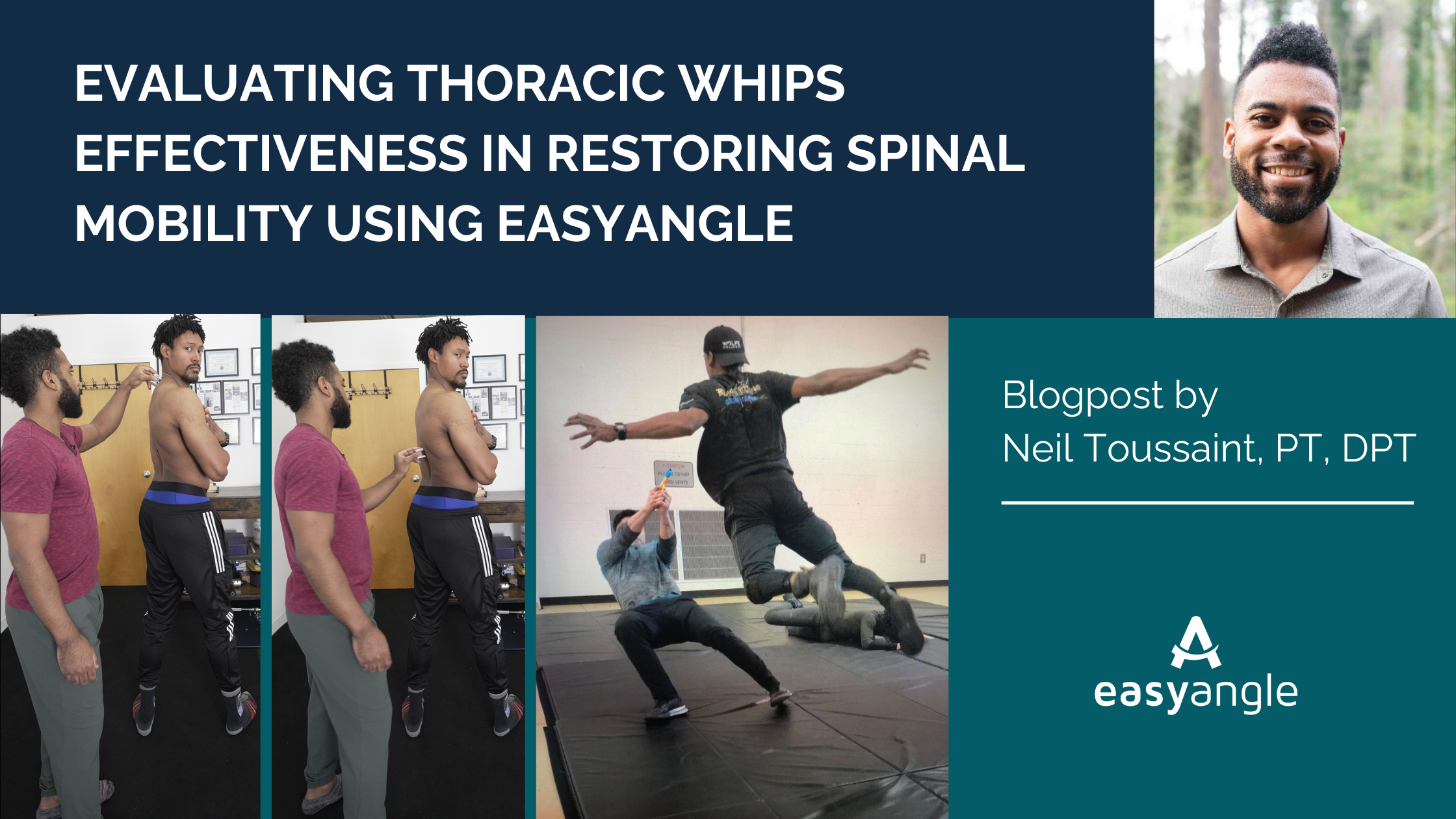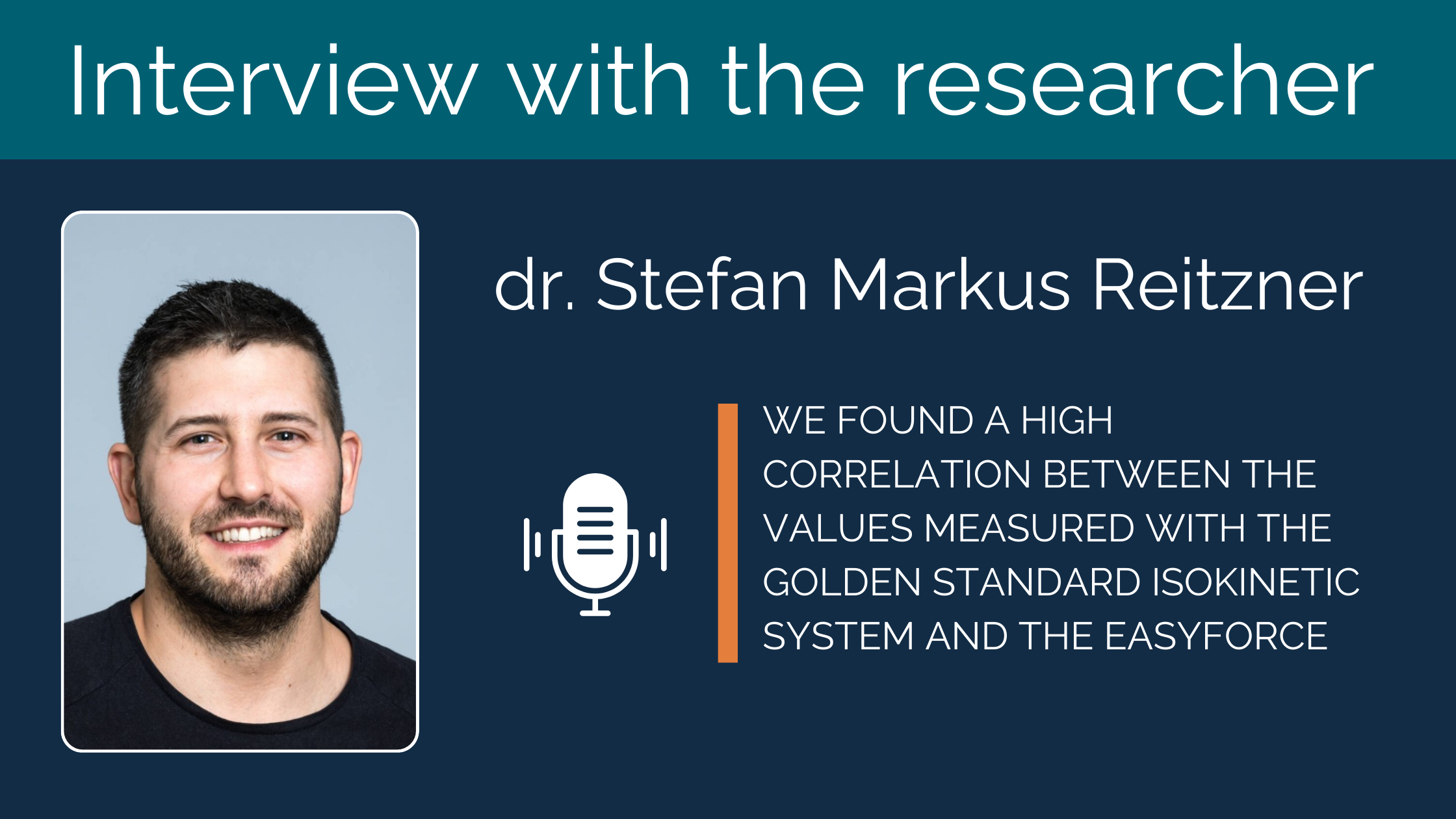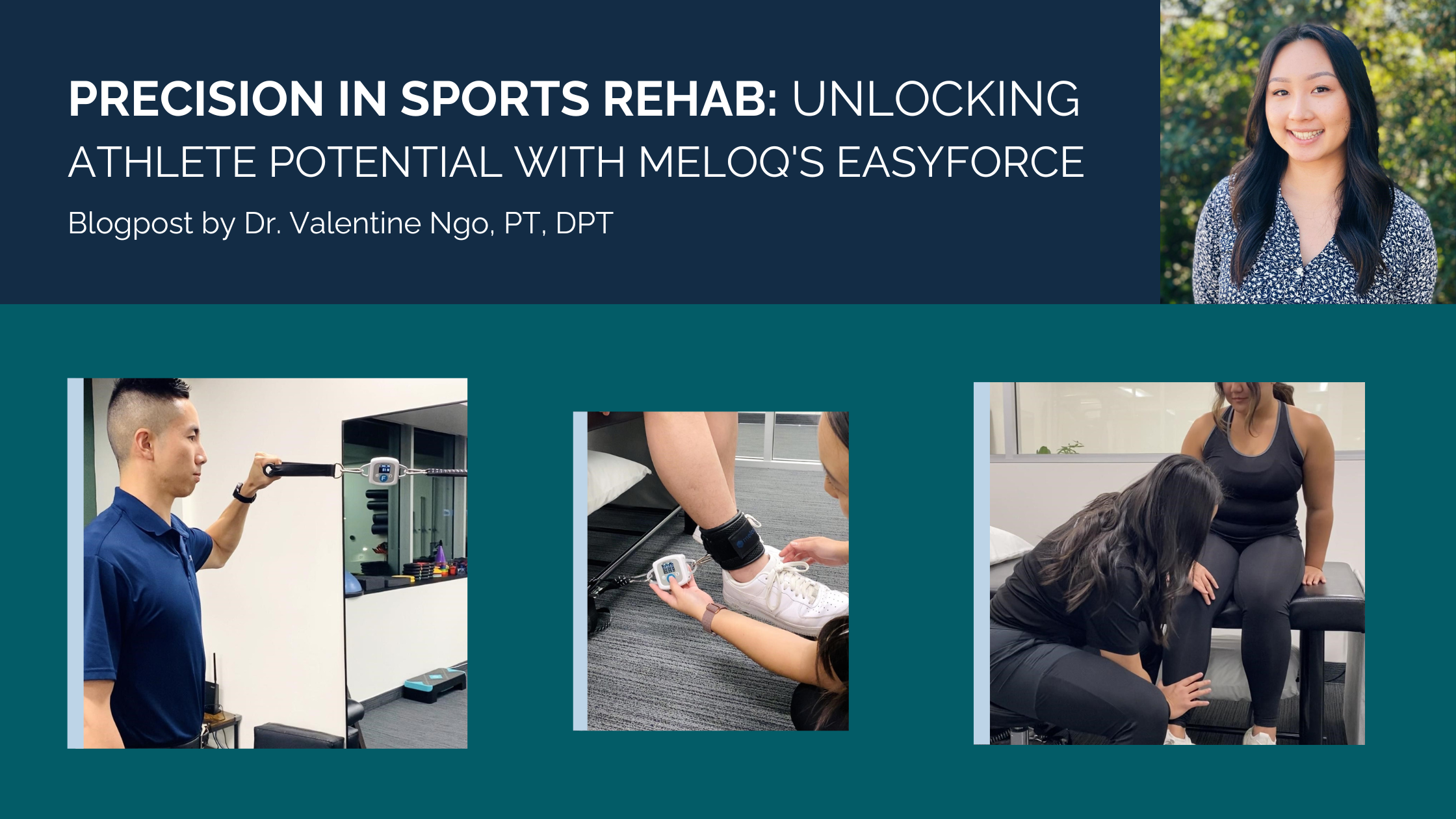-

, by Marko Dombi Evaluating Thoracic Whips Effectiveness in Restoring Spinal Mobility using EasyAngle
-

, by Marko Dombi RESEARCHERS FOUND HIGH CORRELATION BETWEEN VALUES MEASURED WITH THE GOLDEN STANDARD ISOKINETIC SYSTEM AND THE EASYFORCE
-

, by Marko Dombi Precision in Sports Rehab: Unlocking Athlete Potential with Meloq's EasyForce
Precision in Sports Rehab: Unlocking Athlete Potential with Meloq's EasyForce
- , by Marko Dombi
- 4 min reading time

Dr. Valentine Ngo, PT, DPT, a Licensed Physical Therapist, founded Valor Physical Therapy to offer high-quality care to active adults and athletes, addressing the shortcomings of traditional sports rehab. She discusses the limitations of manual muscle testing and introduces Meloq's EasyForce device for objective strength measurements. Dr. Ngo demonstrates the device's effectiveness in assessing strength deficits in functional movements. She also emphasizes her commitment to continually improving patient care.
This blog is written by Dr. Valentine Ngo, PT, DPT, a Licensed Physical Therapist
I started Valor Physical Therapy with the intention of providing quality care to active adults. I wanted to go above and beyond what typical insurance-based “sports rehab” was and help athletes get back on the field/mat without a high risk of re-injury. One of the biggest issues with sports rehab in general OP clinics is that athletes are not treated as athletes from beginning to end.
What I mean by this is that typical evaluations and discharge assessments tend to glaze over the factors that need to be focused on the most for athletes. During evaluations, these specific patients should be tested in a way that will reveal impairments and their true capacities based on their symptoms and sport. Similarly, before formal discharge and return to sport without limitations, athletes should be tested in multiple ways to ensure that their bodies are ready to handle anything their sport requires - their capacities should be even better than what they were prior to injury.

One important aspect of assessing athletes is making sure that the tests are reliable and accurate while also being helpful for creating an effective plan of care. In terms of strength testing, the standard taught in PT programs across the country is the use of manual muscle testing. However, the limitation regarding this is that it actually has many downsides, especially when testing athletes. Manual muscle testing involves the practitioner, using their own manual resistance and pressure, to assess the amount of force that a patient’s muscle(s) can produce in a standard position. This raises many questions by students and clinicians alike:
- How is this reproducible in an accurate way for testing and re-testing?
- How can more than one clinician get the same result if they don’t know exactly how much force to apply?
- How are these standard positions applicable to athletes and how the muscles are used functionally?
- Is this even an accurate measure to begin with?

While manual muscle testing can be a questionable assessment during a physical therapy examination, the objective testing of strength and muscle force is extremely pertinent to the patient’s entire rehab process.

In order to achieve this test of strength in a way that can be helpful for both the clinician and patient, I’ve chosen to use Meloq devices to assist me with this assessment. Meloq’s EasyForce takes the PT’s manual resistance out of the picture and provides a concrete measurement of force that can be used as objective data.
The EasyForce is a compact device that is attached to the patient (depending on the muscle(s) tested) and is then attached to another non-moving object. When prompted, the patient will exert an isometric force against the device and attachments to provide numerical data. Average and peak force (N/Lbs/kilo) is recorded in addition to duration of force production and time of peak force production.
This easy-to-use device can be used in a variety of ways to determine the patient’s objective strength measurements. In this example (see the picture below), I used this to determine the strength deficits of this patient in a way that can provide value to the examination by testing it for 10 seconds and in a semi 90/90 shoulder position - this allows us to see how his strength falters when endurance is a factor and during functional movements associated with martial arts. When testing this patient in the same position but with a 3 second duration, the strength measurements were the same bilaterally. The 10 second duration allowed me to determine that his strength is highly dependent on his muscle endurance, even though the strength measures were similar when performed with a shorter time period under load. This is just one way to use Meloq’s EasyForce in a way that manual muscle testing could not objectively determine.

The thing that I love about this profession and field is that it’s constantly changing, constantly striving to improve. As clinicians, we have a duty to our patients to provide the best treatment that we can. I hope to do my part as a physical therapist by looking for ways to treat patients better and more effectively. With Meloq’s EasyForce, I’ve found one more way to do that.
Thanks for reading!

Dr. Valentine Ngo, PT, DPT
Licensed Physical Therapist
Instagram: @studywithanspt
Email: studywithanspt@gmail.com



